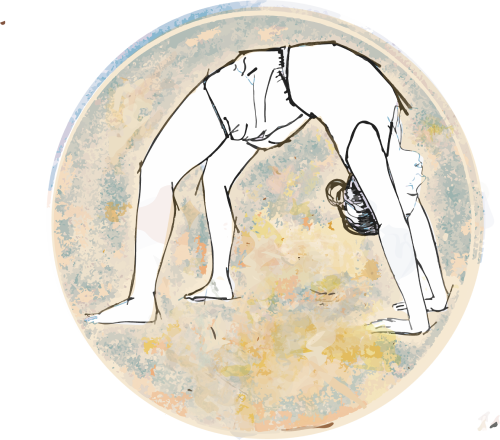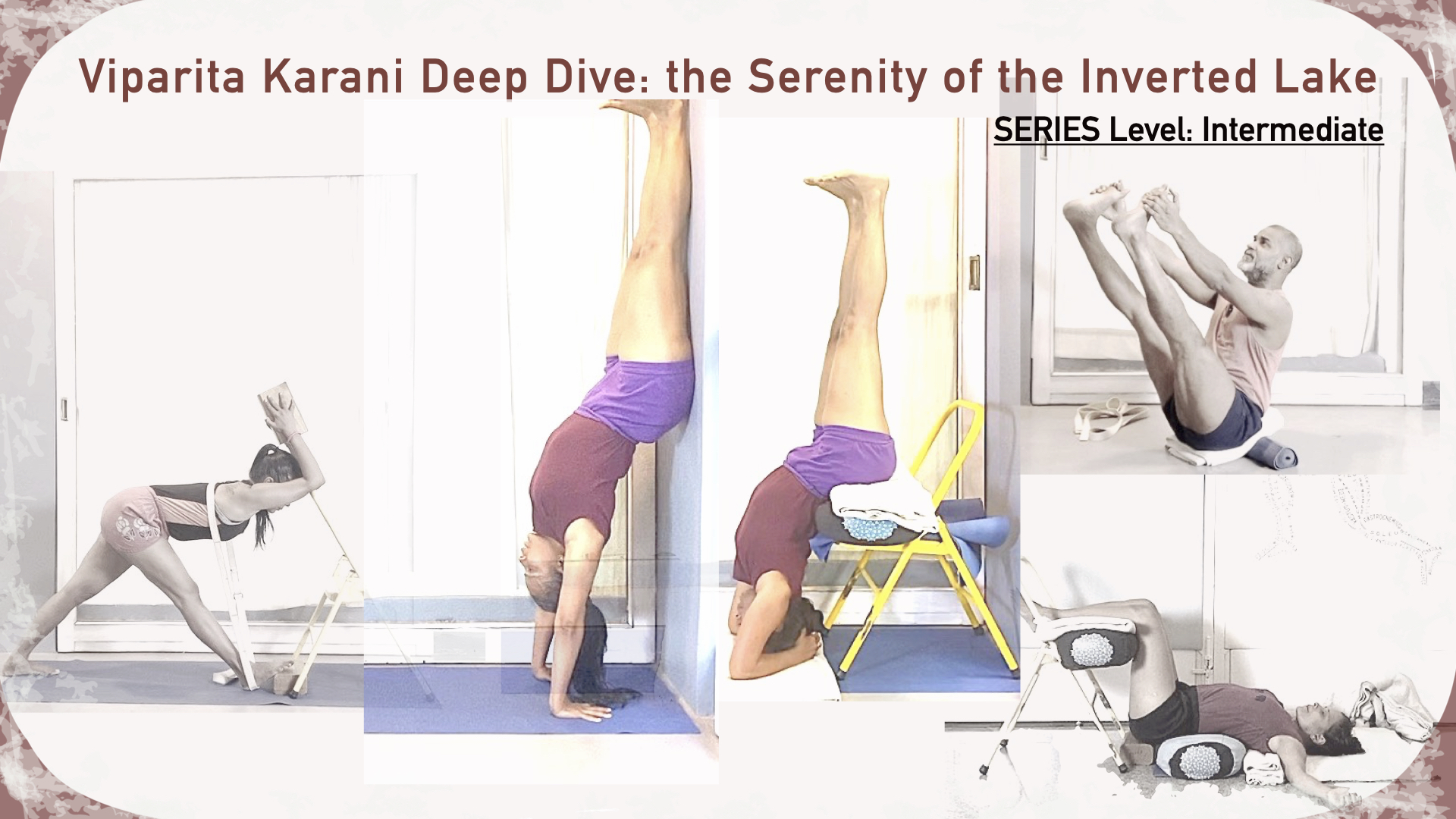In the Iyengar tradition, the restorative qualities of Viparita Karani are harnessed by making possible long supported holds. This position/ action finds mention in the yogic scriptures ( indeed, its benefits are said to be ‘death defying’), but without clear description. It was Mr BKS Iyengar who not only interpreted the action, but also made it accessible to almost everyone through the use of props. In his book, ‘Yoga – The Path to Wholistic Health’, BKS Iyengar says this asana boosts confidence and alleviates nervous exhaustion.
But Viparita karani is not a beginner-level action, even with the use of props/ supports. It involves a peculiar combination of actions that encompasses, back arches, forward extensions, abdominal actions and inversions. In this short course, we build up to this deeply penetrative position. We look at fully supported variations of Viparita karani, as well as more challenging ways of exploring this position in various inverted positions, with varying amounts of support.
Part1: Connecting Shoulderblades to Back Ribs for Back Arches and Twists
Part2: Sacrum as the Fulcrum: Transition From Back Arches to Forward Extensions
Part 4: Viparita Karani Action in Inverted Positions
Tagwords: spine, lower back, hips, back arch, hips, shoulders, shoulderblades, backbends, abdominals, Inversions, concave back, backward extensions, restorative, anti-anxiety, depression, Dandasana, Supta padangusthasana, Jathara parivartanasana,Viparita dandasana, Sirsasana, Parsva Sirsasana, Urdhva dandasana, Adhomukha vrksasana, Sarvangasana, Halasana, Viparita karani, Ubhaya padangusthasana, Utkatasana, Navasana, Purvottanasana, Marichyasana.




